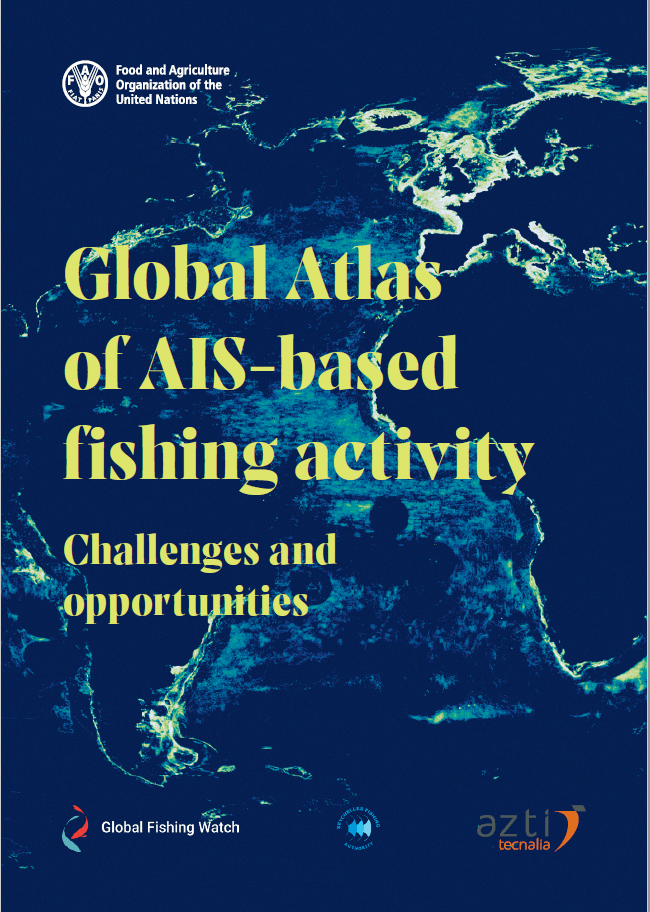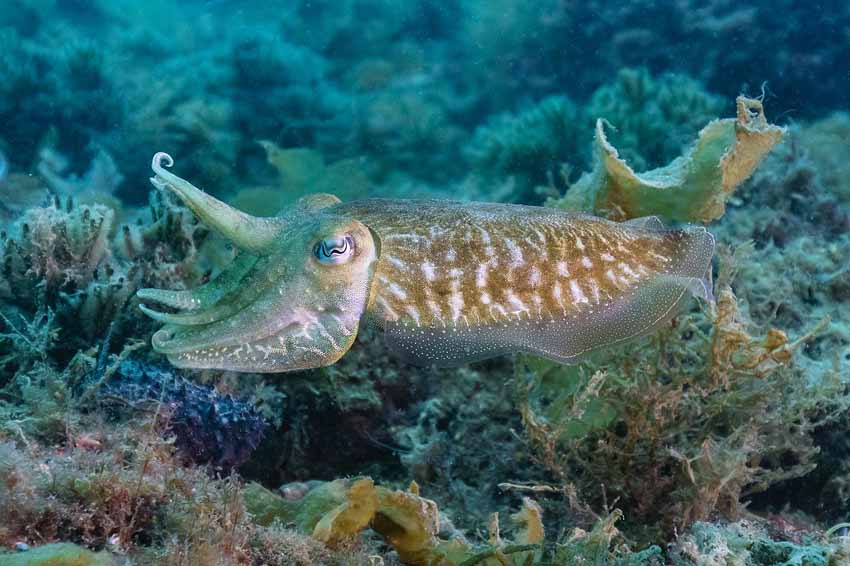New global atlas on using advanced technology to monitor fishing activity
Últimas noticias
An LGTBIQ+ perspective on the animal kingdom
Una mirada LGTBIQ+ al reino animal
Circular Economy in Action: Valorisation of By-products through Projects like PRIMA NEWFEED
- Fishing vessels with Automatic Identification Systems (AIS) increasing by 10 to 30 percent each year
- Download Atlas
19 November 2019, Rome – A new global atlas – the first-ever of its kind – analyses the opportunities and challenges of using Automatic Identification Systems (AIS) to monitor fishing activity around the globe.
AIS is a tracking technology designed for navigation safety that transmits a ship’s location, identity, course and speed. By using machine-learning algorithms, AIS information allows us to identify vessel’s activity at sea.
The number of fishing vessels with AIS is increasing by 10 to 30 percent each year, making this technology more and more informative with time.
“AIS provides detailed tracks of tens of thousands of industrial fishing vessels, and this detailed tracking data has the potential to provide estimates of fishing activity and effort in near real time. This Atlas assesses this potential and shows that AIS can start to be considered a valid technology for estimating fishing indicators,” said FAO, the Global Fishing Watch (GFW), AZTI and the Seychelles Fishing Authority in the foreword of the Atlas issued on the sidelines of FAO’s International Symposium on Fisheries Sustainability.
Global Fishing Watch (GFW) published in 2018 a first global database of fishing operations based on AIS data. This dataset tracked the activity of over 60,000 fishing vessels and was used to understand fishing around the world.
But the use of this new technology for monitoring fishing activity needed verifying and reviewing so fisheries managers and policy makers can fully understand its strengths and limitations.
The 400-page Global Atlas on AIS-based Fishing Activity provides this detailed review and can prove a useful tool for improving sustainable fisheries management in line with SDG14.
It is the result of a two-year analysis of the GFW data, region by region, drawing on the knowledge of 80 fisheries experts, FAO fisheries data, and other scientific databases. The atlas also includes two local comprehensive analyses – on all fisheries in the Bay of Biscay and Seychelles’ tuna fisheries.
The Atlas finds that in some regions, AIS data can provide a near comprehensive view of fishing activity, this is for example the case in the northern Atlantic for vessels above 15 metres in length, whilst in other regions, this data provides only a small fraction of the fisheries activity, as is the case of the Indian Ocean. This is partly due to the large proportion of artisanal or small size vessel sizes in many central and southern regions, but also because of lower use of AIS by larger vessels in regions such as Southeast Asia.
The Atlas confirms that the Northwest Pacific (FAO Fishing Area 61) and Northeast Atlantic (Area 27) are the areas with more industrialized fisheries and where AIS technology is more adopted. The largest discrepancy between AIS-based information and other fishing data occur for fishing activity in the Eastern Indian Ocean (Area 57).
Key findings
- AIS can track the majority of the world’s large fishing vessels (above 24 metres), especially from upper and middle-income countries and territories, distant water fleets and vessels on the high seas.
- For monitoring fishing activity, AIS data has its limitations. AIS is carried by a small number of the world’s 2.8 million fishing vessels, and compared to the Vessels Monitoring System (VMS), vessels can more easily turn off their AIS or broadcast incorrect identity information.
- AIS use varies significantly by fishing areas. In Europe, almost all vessels over 15 meters have AIS. In Southeast Asia, very few have AIS and reception quality is poor.
- AIS data is limited for multi-gear vessels as highlighted in the analysis on the Bay of Biscay.
- AIS is still limited in terms of its capacity to discriminate types of fishing activities for smaller scale fisheries using multiple combinations of fishing gears.
- AIS can provide information on fishing activity much more rapidly than logbooks or official assessments via VMS. However, AIS’s level of detail (e.g. number of fishing gear or species captured) could be insufficient for many other uses.
- Longliners with wide presence in high seas worldwide are the type of vessels better captured by AIS-based algorithms. AIS also captures well other main fishing gears such as purse seiners and trawlers but tend to underrepresent their importance compared to longliners. This is confirmed by worldwide catch data showing that the order of prevalence of fishing gears is trawls, purse seines, longlines and other gears with variations across FAO areas.
- AIS could start to be considered as a viable technology for near real time estimates of fishing effort and marine spatial planning provided it is supported by human verification given its variable accuracy.
Note: Many actors see AIS as a technology that can be used to track illegal fishing. FAO wants to stress that AIS has been originally designed for maritime security purposes – so that ships are aware of other ships’ position – unlike VMS which was designed for fishing control and enforcement.
FAO does not promote the use of a technology for a purpose which it has not been designed for, but acknowledges that, analyzed properly, AIS data could also be used to provide estimates of illegal fishing in certain situations.








